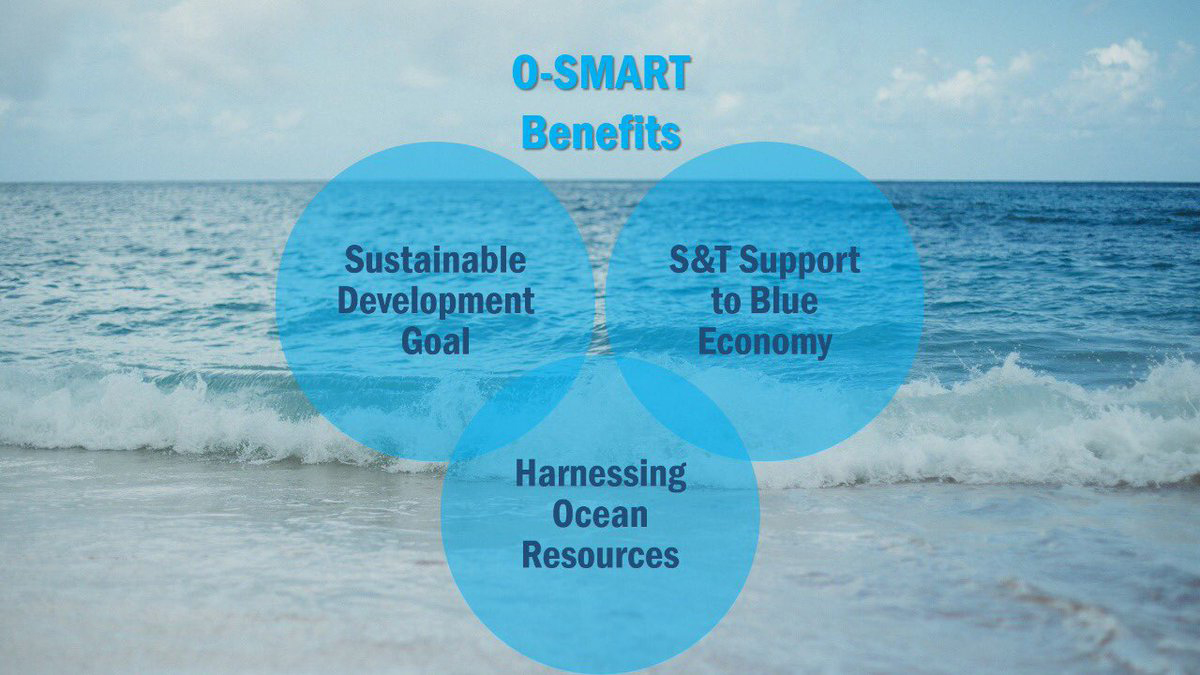Governance
O-SMART Scheme
- 26 Nov 2021
- 6 min read
Why in News
The Cabinet Committee on Economic Affairs approved the continuation of the ‘Ocean Services, Modelling, Application, Resources and Technology (O-SMART)’ Scheme for the period of 2021-26.
Key Points
- About:
- It is a government scheme that aims at promoting ocean research and setting up early warning weather systems.
- It was launched in August 2018.
- It also aims at addressing ocean development activities such as technology, services, resources, science, and observations as well as offering required technological assistance for implementing aspects of the Blue Economy.
- It comprises seven sub-schemes which are being implemented by autonomous institutes of the Ministry of Earth Sciences (MoES).
- Sub-Schemes are: Ocean Technology, Ocean Modelling and Advisory Services (OSMAS), Ocean Observation Network (OON), Ocean Non-Living Resources, Marine Living Resources and Ecology (MLRE), Coastal Research and Operation, Maintenance of Research Vessels
- It is a government scheme that aims at promoting ocean research and setting up early warning weather systems.
- Objectives:
- To generate and regularly update information on Marine Living Resources and their relationship with the physical environment in the Indian Exclusive Economic Zone (EEZ).
- To periodically monitor levels of seawater pollutants for health assessment of coastal waters of India, to develop shoreline change maps for assessment of coastal erosion due to natural and anthropogenic activities.
- To develop a wide range of state-of-the-art ocean observation systems for the acquisition of real-time data from the seas around India and to cater to the testing and sea trial activities of ocean technology.
- To generate and disseminate a suite of user-oriented ocean information, advisories, warnings, data and data products for the benefit of society.
- To develop high-resolution models for ocean forecast and reanalysis systems.
- To develop algorithms for validation of satellite data for coastal research and to monitor changes in the coastal research.
- Acquisition of Coastal Research Vessels (CRVs) for coastal pollution monitoring, testing of various underwater components and technology demonstration and to support their operation and maintenance.
- To develop technologies to tap the marine bioresources, generate freshwater and ocean energy and develop underwater vehicles and technologies.
- Establishment of Ballast water treatment facility.
- Ballast Water Discharge by ships is responsible for the introduction of invasive species in the oceans by taking water from one port and discharging it during the next port call.
- To carry out exploration of Polymetallic Nodules (MPN) from water depth of 5500 m in a site of 75000 sq. km allotted to India by the United Nations in the Central Indian Ocean Basin, and to carry out investigations of gas hydrates.
- MPN, also called manganese nodules, are rock concretions formed of concentric layers of iron and manganese hydroxides around a core.
- MPN contain multiple metals like copper, nickel, cobalt, manganese, iron, lead, zinc, aluminium, silver, gold and platinum etc. in variable constitutions and are precipitate of hot fluids from upwelling hot magma from the deep interior of the oceanic crust.
- Mining for Polymetallic nodules is of strategic importance for India as there are no terrestrial sources of these metals in India.
- Exploration of polymetallic sulphides near Rodrigues Triple junction (convergence of Central Indian Ridge, the Southeast Indian Ridge, and the Southwest Indian Ridge) in 10000 sq. km of area allotted to India in International waters by International Seabed Authority.
- Submission of India's claim over continental shelf extending beyond the EEZ supported by scientific data, and the Topographic survey of EEZ of India.
- Significance:
- It will augment the capacity building of India in the oceanographic field at the international level with the ongoing extensive research and technology development activities.
- It will aid in strengthening India’s contribution towards a national policy on Blue Economy for efficient and effective use of the ocean resources in a sustainable way.
- It will offer further comprehensive coverage while strengthening ongoing activities to deliver cutting-edge technology for the marine sector, forecast and warning services, understanding marine biodiversity, coastal processes, and conservation strategies for marine living organisms.
- It will help in achieving United Nations’ Sustainable Development Goal (SDG) 14 to conserve and sustainably use the oceans, seas, and marine resources.
- Major Milestones:
- It has helped India get recognized as Pioneer Investor with International Seabed Authority (ISA) for conducting extensive research on deep-sea mining of MPN and hydrothermal sulfides in the allotted area of the Indian Ocean.
- The scheme has enabled India to take a leadership role in implementing the Indian Ocean component of the Global Ocean Observing System in UNESCO’s Intergovernmental Oceanographic Commission (IOC).
- A state-of-the-art Early Warning System for oceanic disasters such as storms, tsunamis, has also been set up at Indian National Centre for Ocean Information Service (INCOIS), Hyderabad.







